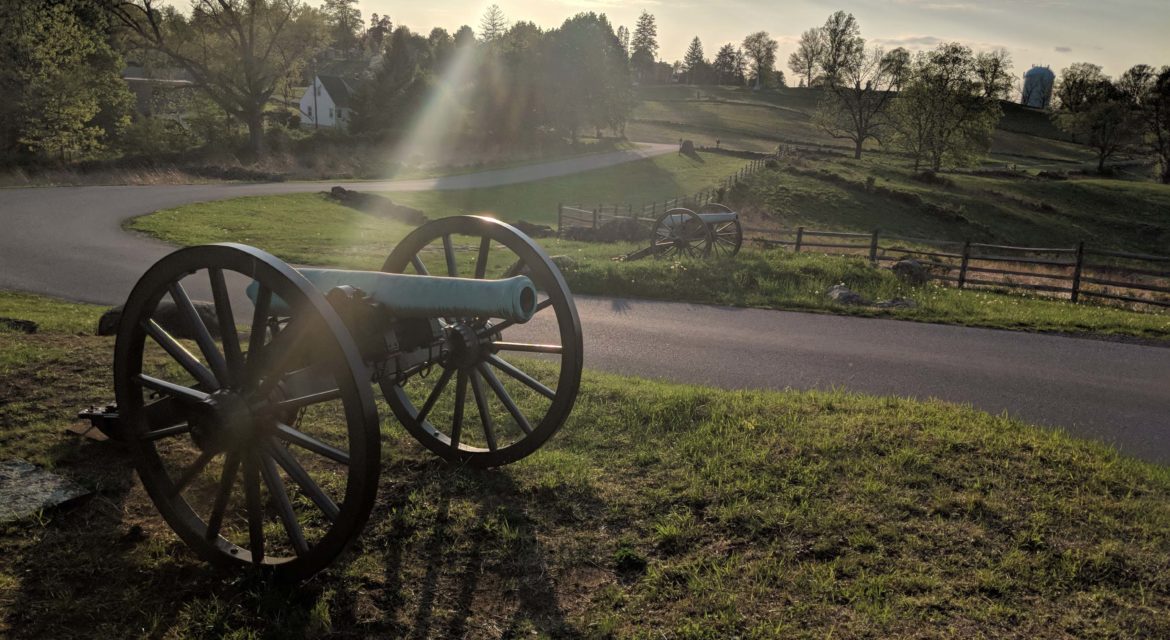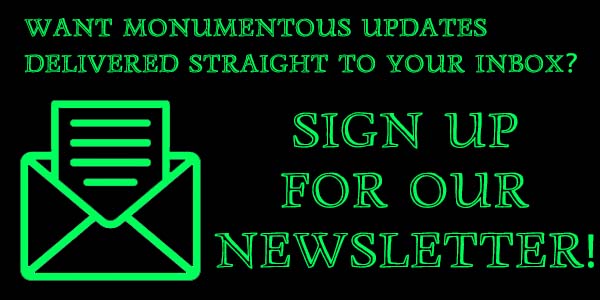 Monuments can be spread across vast complexes or even an entire section of a city, but few can match the scale or scope of the monuments and landmarks featured on the Auto Tour of Gettysburg National Military Park. Situated in the center of the city of Gettysburg in Pennsylvania, this self-guided 24-mile tour starts at the visitor center and includes 16 tour stops. All of them feature a combination of history and commemoration that honor the most significant battle of the American Civil War.
Monuments can be spread across vast complexes or even an entire section of a city, but few can match the scale or scope of the monuments and landmarks featured on the Auto Tour of Gettysburg National Military Park. Situated in the center of the city of Gettysburg in Pennsylvania, this self-guided 24-mile tour starts at the visitor center and includes 16 tour stops. All of them feature a combination of history and commemoration that honor the most significant battle of the American Civil War.
The unique experiences that have been enabled for visitors along the Auto Tour showcase how monuments can be utilized to commemorate and celebrate different elements of a location or event. Doing so has opened up a powerful economic impact on the region that is also being reflected in the culture of the area. It’s an impact that is set to become that much more significant as time goes on.

Creating a Venue for Memorials and Remembrance
The Gettysburg National Military Park has been designed to both protect and interpret the landscape of the 1863 Battle of Gettysburg that took place during the American Civil War. The battle involved the largest number of casualties of the entire war and is often described as the turning point of the entire conflict.
 Federal acquisition of land that would become the national park began in 1893, and various monuments such as the Virginia Memorial and sites like McPherson Ridge became part of the Park over the decades. Throughout the Park, memorials and cannons mark positions and honor great sacrifices that were made during the battle. These cannons and memorials are located all throughout the Auto Tour.
Federal acquisition of land that would become the national park began in 1893, and various monuments such as the Virginia Memorial and sites like McPherson Ridge became part of the Park over the decades. Throughout the Park, memorials and cannons mark positions and honor great sacrifices that were made during the battle. These cannons and memorials are located all throughout the Auto Tour.
The Park also has an ongoing program to restore portions of the battlefield to their historical non-wooded conditions, as well as to replant historic orchards and woodlots that are now missing. The Park also continues to grow in both size and scope, which continued with the acquisition of the David Willis House, which opened on Feb. 12, 2009.
As an example of the kind of history that Gettysburg National Military Park contains, over 43,000 American Civil War artifacts are displayed in the Gettysburg Museum and Visitor Center. However, the self-guided Auto Tour goes beyond what’s contained there and provides something few museums can offer by allowing visitors to experience and interact with genuine history.
A Self-Guided History Lesson
 A complete tour of the Park consists of the 16 stops along the Auto Tour in addition to the Barlow Knoll Loop, Historic Downtown Gettysburg and the East Cavalry Battlefield Site. It takes about 3 hours to complete the Tour, although that timing depends on how long viewers stay at each site. It wouldn’t take much to spend the entire day on the Tour, which is designed to be entirely self-guided.
A complete tour of the Park consists of the 16 stops along the Auto Tour in addition to the Barlow Knoll Loop, Historic Downtown Gettysburg and the East Cavalry Battlefield Site. It takes about 3 hours to complete the Tour, although that timing depends on how long viewers stay at each site. It wouldn’t take much to spend the entire day on the Tour, which is designed to be entirely self-guided.
Auto Tour road signs ensure that visitors stay on the path of the Tour and can easily see everything it has to offer. The sites are arranged in chronological order, taking visitors through the events that took place from July 1st through July 3rd, 1863. A handful are within walking distance of one another, but most require separate drives that bring visitors into entirely different settings and situations that took place over the course of the Battle of Gettysburg. Notable locations like the National Cemetery and Gettysburg Train Station that aren’t directly associated with the battle are present as well.
 Plaques, signs, grave markers and monuments are located at each stop to detail the history of each, and that history ranges from the setting of President Abraham Lincoln’s Gettysburg Address to the spot where “Picket’s Charge” took place to the North Carolina Monument. Each spot is a unique combination of memorial and living history.
Plaques, signs, grave markers and monuments are located at each stop to detail the history of each, and that history ranges from the setting of President Abraham Lincoln’s Gettysburg Address to the spot where “Picket’s Charge” took place to the North Carolina Monument. Each spot is a unique combination of memorial and living history.
This living history can be experienced in multiple ways, as a couple of the locations have towers that allow visitors to get a look across the actual battlefields. Visitors can identify where troops were being moved and what the tactical situations looked like at certain points during the battle. Other markers provide an especially up-close and personal look at the monuments that have been erected to honor the countless participants of the battle.
The Auto Tour features monuments and markers of all sizes, but some of the more notable ones have been able to capture the attention of visitors due to their own histories and monumentous natures.

Notable Monuments
 On September 27th, 1910, Pennsylvanians who had fought at the Battle of Gettysburg returned for a dedication of a memorial that would be Gettysburg’s largest monument. 90 bronze tablets along the base display the names of each of the 34,530 Pennsylvania soldiers who took part in the battle. A bronze Nike figure, the Goddess of Victory and Peace, sits on top of the dome.
On September 27th, 1910, Pennsylvanians who had fought at the Battle of Gettysburg returned for a dedication of a memorial that would be Gettysburg’s largest monument. 90 bronze tablets along the base display the names of each of the 34,530 Pennsylvania soldiers who took part in the battle. A bronze Nike figure, the Goddess of Victory and Peace, sits on top of the dome.
The New York State Monument is just over 94-feet high, topped with a 16-foot statue depicting the State of New York holding a wreath. The base of the monument features bronze reliefs of four stylized scenes involving New York officers. Another bronze relief of an eagle along with the state motto, Excelsior, is also displayed just above the Coat of Arms of the State of New York set in laurel leaves of victory.
The Eternal Light Peace Memorial was erected as a symbol of peace and national unity. It was dedicated in 1938, to mark the 75th anniversary of the Battle of Gettysburg. It marked the last great reunion of veterans from both the Union and Confederate armies. A natural gas torch to eternally symbolize the unity of the United States tops the monument.
These monuments are just a few examples of the history and styles that are displayed all throughout the Auto Tour in different shapes, styles and figures. This combination has been able to attract visitors from across the United States who quickly see how many different things there are to do along and around the Tour, as well as how many ways they can commemorate their visit.

Events, Education and Opportunities
 The Gettysburg Foundation is a non-profit organization that helps operate the Park and works to educate the public about the significance of the history contained within it. They’ve been able to do so in ways that have created a powerful economic and cultural impact on the entire region and ensured the organization will be able to continue with their mission in the long term.
The Gettysburg Foundation is a non-profit organization that helps operate the Park and works to educate the public about the significance of the history contained within it. They’ve been able to do so in ways that have created a powerful economic and cultural impact on the entire region and ensured the organization will be able to continue with their mission in the long term.
The Gettysburg Museum and Visitor Center contains items of all types for sale. They range from clothing to books to cups, while the Refreshment Saloon and Battlegrounds Cafe offer sandwiches, salads, soups, chili, fruits, desserts, beverages, and much more. These sources of income are in addition to the tickets that can be purchased at the Center at multiple levels in various packages. The Center provides a convenient starting place for the free Auto Tour, as well as paid tours that can be the focus of those ticket packages.
Licensed Battlefield Guides train for years and must pass extensive tests administered by the National Park Service (NPS) to qualify to give tours. These historians are the most qualified, knowledgeable, skilled and professional individuals licensed by the National Park Service as guides. Field guides and audio CDs are also available for purchase, which provide visitors with additional ways to experience the monument.
The Gettysburg Foundation also runs and organizes events that take place throughout the year, bringing together residents and visitors. However, the cultural and economic impact of their work can be seen all across the city. The downtown business community within the Historic District of Gettysburg houses a number of different businesses. They range from souvenir shops, to art galleries, to restaurants, to museums, all of which have been able to survive and thrive thanks to the number of people that come for the Auto Tour on a daily basis.
The impact of the Auto Tour on Gettysburg National Military Park is reflected in the economy and culture of the area in numerous ways, but the most significant difference it has made to the region surrounds the legacy it has helped visitors and residents to recognize and appreciate.

A Living Legacy
 The 16 tour stops along the Auto Tour throughout Gettysburg National Military Park provide visitors with an incredible sense of the history that took place across Gettysburg in July of 1863. Monuments that honor different people, individuals and entire regiments provide them with a whole different perspective around those events. This combination has created a living legacy that will continue to draw in visitors and unite the community in especially powerful ways.
The 16 tour stops along the Auto Tour throughout Gettysburg National Military Park provide visitors with an incredible sense of the history that took place across Gettysburg in July of 1863. Monuments that honor different people, individuals and entire regiments provide them with a whole different perspective around those events. This combination has created a living legacy that will continue to draw in visitors and unite the community in especially powerful ways.
The Auto Tour showcases what’s possible when visitors can experience history and see monuments that are completely unique to an area or event. It would be impossible for another city to create the same kind of experiences and monuments that are in Gettysburg, but the same thing can be said for any other location in the world.



